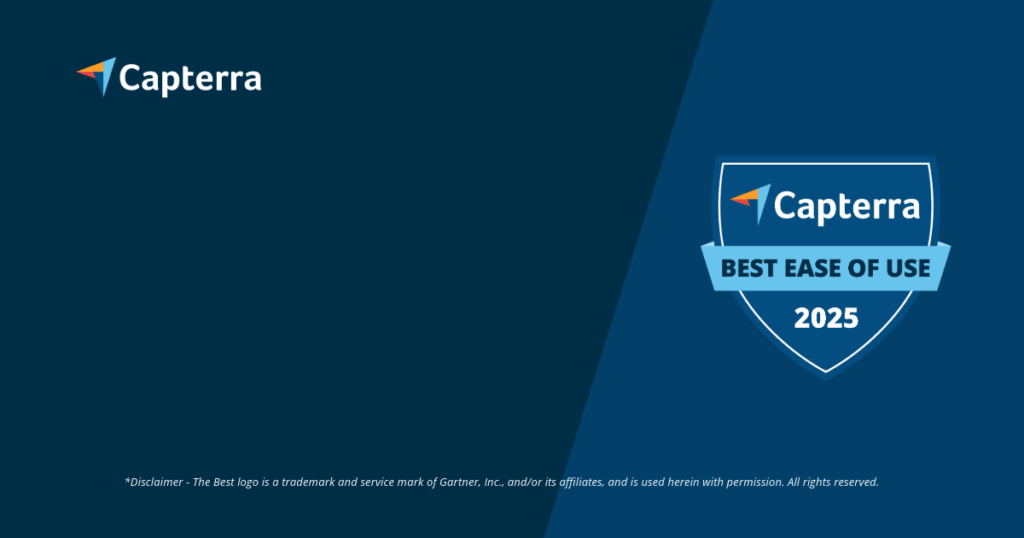Meeting Checklist: How to Optimize Efficiency and Structure for Successful Construction Projects
The Importance of Structured Meetings for Your Project Success
Efficient meetings are the backbone of successful construction projects. They are not just for the exchange of information but are crucial for coordination, progress monitoring, and early detection of issues. A well-crafted meeting checklist is your most important tool to make meetings structured, focused, and truly productive. Without a clear agenda and defined processes, meetings can quickly become real time-wasters that deliver more frustration than results. Especially in the construction industry, where schedules are tight and budgets are often limited, an optimized meeting checklist can make the difference between a smooth project flow and costly delays. We at Valoon GmbH understand the challenges in project management all too well, particularly the necessity of clear communication between the construction site and the office, and we want to provide you with practical solutions through this article. Always remember: Good preparation with a detailed meeting checklist is already half the battle.
- Structured meetings are crucial for coordination, progress monitoring, and early problem identification.
- A detailed meeting checklist is your tool for efficient and focused meetings.
- This article provides a comprehensive guide and checklist for all phases of your meetings.
- You will learn how to avoid typical pitfalls and effectively use digital tools.
The goal of this article: A comprehensive checklist for your successful meetings
With this article, we want to give you a comprehensive guide and a practical-oriented meeting checklist to help you optimize your meetings from the ground up. We will explore together all phases of a meeting – from meticulous preparation to disciplined execution and careful follow-up and documentation. You will learn how to avoid typical pitfalls, effectively engage participants, and ensure that each meeting delivers concrete results. Additionally, we will show you how digital tools and checklist apps, like our Meeting App, can support you in digitizing the entire process and making it even more efficient. After reading this article, you will be well-prepared to create your own customized meeting checklist or use our templates as a basis for your projects. Discover how structured meetings and a consistent use of your meeting checklist not only save you time and costs but also sustainably improve the quality of your construction projects. Start now and make your meetings a true success factor for your projects!Understanding the meeting: Purpose, goals, and typical pitfalls
Definition: The meeting as a regular gathering of all project stakeholders
A meeting is, simply put, a regularly scheduled gathering of all essential project stakeholders of a construction project. This typically includes clients, architects, technical engineers, site managers, and, of course, representatives from the executing trades. The purpose is mainly to discuss the current project status, keep track of progress, identify issues that arise, and collaboratively find solutions. A well-conducted meeting, supported by a detailed meeting checklist, ensures that all participants are on the same page and that decisions can be made transparently. It is a central tool for project control and quality assurance – this should not be underestimated. The frequency of the meetings can vary depending on the project phase and complexity, sometimes weekly, sometimes monthly. Careful documentation using a meeting protocol plays a crucial role here, of course.
- Definition: A regular gathering of all essential project stakeholders for project management.
- Core goals: Ensuring progress monitoring, early problem identification, and effective coordination of the trades.
- Typical pitfalls: They often fail due to loss of focus, one-sided communication, or unresolved conflicts.
- Importance of the checklist: A meeting checklist helps systematically track these goals and minimize mistakes.
Purpose: Progress monitoring, problem identification, and coordination as core goals
The main objective of a meeting is to ensure smooth project flow. For this, there are several core goals that you should ideally document directly in your meeting checklist . First, it is about progress monitoring: Are the tasks on schedule and does everything meet the agreed quality standards? Second, problem identification is a crucial point. Here, it’s about recognizing and discussing possible difficulties, delays, or deficiencies early on. Third, the coordination of various trades is in focus to avoid interface conflicts and ensure an efficient construction process. An effective meeting checklist helps you tackle these goals systematically and ensure that no important points are overlooked. Additionally, the meeting serves to clarify responsibilities and establish measures for issue resolution or plan adjustments. The results are then directly integrated into the task management .
Why meetings often fail: Loss of focus, one-sided communication, and unresolved conflicts
Despite their importance, many meetings unfortunately fail due to fundamental issues often exacerbated by the absence of a clear meeting checklist agenda. A common reason is loss of focus: discussions drift off-topic, irrelevant issues are addressed, or there is simply a lack of a clear agenda. Another source of error is one-sided communication, where certain participants dominate and others do not get a chance to speak or may hesitate to raise critical points. This often leads to incomplete information and poor decisions. Finally, unresolved conflicts that are not approached constructively lead to a poor atmosphere and block progress. A good Fokusverlust: Die Diskussionen schweifen ab, es werden irrelevante Themen behandelt oder es fehlt schlicht eine klare Agenda. Eine weitere Fehlerquelle ist die einseitige Kommunikation, bei der einzelne Teilnehmer dominieren und andere nicht zu Wort kommen oder sich vielleicht nicht trauen, kritische Punkte anzusprechen. Das führt oft zu unvollständigen Informationen und Fehlentscheidungen. Schließlich führen ungelöste Konflikte, die nicht konstruktiv angegangen werden, zu einer schlechten Atmosphäre und blockieren den Fortschritt. Eine gute meeting checklist therefore should also include points on moderation and conflict resolution. As studies show, the use of digital meeting tools can help minimize these issues by providing structure and facilitating documentation. It is really important to understand the meeting as a forum for coordination and updates and not as an arena for contractual disputes, as highlighted in the research input.Optimal preparation: Use your checklist for goal-oriented meetings
Precisely define participants: The RACI matrix as the key to success
Careful selection of participants is a crucial point on your meeting checklist. Because let’s be honest: Not everyone needs to be present at every meeting. An overload of participants often leads to inefficiency.Consider using a RACI matrix (Responsible, Accountable, Consulted, Informed) to clearly define who is absolutely necessary for which agenda items (Mandatory Attendees) and who only needs to be informed (Information Recipients). Communicate clearly that in the event of an absence, a competent representative must be sent who has decision-making authority. This ensures that decisions can be made, and the meeting is not blocked due to the lack of expertise. The strategic selection of participants, as emphasized in the research input, is a real lever for efficient meetings. A well-thought-out invitation to the meeting should clearly communicate this distinction and is an important part of your meeting checklist.
- Define the participant group precisely to ensure efficiency (e.g. using RACI matrix).
- Create a detailed agenda, send it out in advance, and request input from participants.
- Clarify critical details before construction begins, such as scope of work, timelines, interfaces, and site-related preliminary services.
- Establish a solid discussion foundation through pre-distributed information and formulate the invitation as a value proposition.
- Ensure smooth logistics, including a suitable room and functioning technology.
Create and send the agenda in a timely manner: Use participant input for comprehensive preparation
A detailed agenda is the heart of every successful meeting and a must-have on your meeting checklist. Send the agenda at least a few days before the appointment to all participants and actively request input for additional discussion points. This not only encourages the completeness of the agenda but also prepares the participants, as they can engage with the topics beforehand. Set an approximate timeframe for each agenda item to keep discussions focused. A clearly structured agenda that also leaves room for ‘Other topics’ but actively manages this point prevents the meeting from veering off track. The research insights emphasize the strategic advantage of a pre-circulated agenda that subtly shifts the responsibility for preparation onto the participants. A good meeting checklist helps you standardize this process.
Important points of your Meeting Checklist before construction begins
Especially the first meeting before construction begins is particularly critical, as the path is set for the entire execution phase. Your meeting checklist should be particularly detailed for this meeting and cover the following aspects to avoid misunderstandings and costly rework from the outset:
- Detailed coordination of scope of work and execution: Clarify specific tolerances, acceptable deviations and the exact procedures for change orders. This is crucial for managing expectations for all involved.
- Key dates for the start of construction and subsequent trades: Analyze not only the dates but also the dependencies between trades. Identify critical paths and plan buffer times – this can be invaluable.
- Height of floor construction: Document the precisely agreed height and, very importantly, the reference point for measurement, to prevent later problems with the integration of systems.
- Interfaces and scope delineation to other trades: This is unfortunately a common point of contention. Clearly define responsibilities, such as who is responsible for sealing openings. A precise meeting checklist is immensely helpful here.
- Verification of site-related preliminary services: Do not rely on a purely visual inspection. Use a standardized meeting checklist, to check whether all required infrastructures (e.g., electrical installations, plumbing connections) are present and meet specifications.
- Storage options and delivery addresses: Ensure that sufficient and secure storage space is available before materials arrive, and clearly communicate the delivery procedures to all suppliers.
Create a discussion foundation and formulate the invitation as a value proposition
For a productive meeting, it is crucial that all participants are well-informed. A key point on your meeting checklist is therefore to ensure a solid discussion foundation. This means distributing relevant documents, plans, or reports in advance. As suggested in the research input, you should also provide alternatives with pros and cons and a summary of existing opinions to enable informed decision-making. Formulate the invitation to the meeting not just as a pure appointment announcement but as a value proposition: Clearly explain the purpose, goal, and benefit of the meeting for the participants. This increases motivation and the willingness to actively participate. A well-formulated invitation is often an underestimated part of an effective meeting checklist.
Ensure logistics: Optimal conditions for your meeting
Logistics may seem trivial, but it is an important factor for the success of your meetings and should not be missing from your meeting checklist . Ensure a suitable meeting room, which offers enough space and is well-ventilated. Check the technical equipment in advance: Do projectors, internet connectivity, and possibly microphones work? If external participants join via video conference, test the connection in good time. A small “moderator’s kit” with pens, paper, and perhaps post-its can be very helpful. Providing refreshments (coffee, water, possibly small snacks) also contributes to a pleasant atmosphere. Smooth logistics minimize distractions and allow participants to fully focus on the content of the meeting checklist meeting. Remember that professional preparation also includes these aspects.Efficient execution: How to use your checklist for productive meetings
Punctuality and moderation: Laying the groundwork for a structured meeting
A punctual start is more than just a form of courtesy; it is a sign of appreciation for everyone’s time and sets the tone for a disciplined meeting. Your meeting checklist should therefore include punctuality as a fixed point. Clear moderation is equally crucial. The moderator (often the site manager or architect) is responsible for guiding through the agenda, fairly distributing speaking time, and ensuring discussions remain focused. At the beginning, it is helpful to briefly explain the communication rules: a respectful tone, active listening, and of course constructive contributions are invaluable here. The moderator intervenes when discussions stray and redirects the conversation back to the topic. Good moderation, supported by the meeting checklist, is the key to achieving results even on controversial topics. The – that is a good guideline.
Focus, time management, and communication rules: Minimize distractions
To maintain focus during the meeting, it is important to minimize distractions. One point on your meeting checklist could be an explicit ban on smartphones or tablets, unless the devices are actively used for the meeting (e.g., for digital plans). Strict time management is another factor for success. Ideally, appoint a timekeeper to ensure that the times allocated for each agenda item are adhered to. Adhering to the agenda and time limits, often part of an extensive meeting checklist, signals professionalism. Establish clear communication rules: Everyone lets each other finish, criticism is expressed constructively, and personal attacks are taboo. These rules, documented in your meeting checklist, promote productive dialogue and help to avoid conflicts or at least address them factually. A construction documentation app can help make relevant information quickly accessible and thus maintain focus.
Structured content and SMART goals: Promote interaction and secure results
Make your meetings interactive to keep attention high. Instead of long monologues, encourage discussions and solicit various perspectives. Use visual aids like plans, photos, or charts. An important point on your meeting checklist is the definition of SMART goals for the meeting itself and for the resulting tasks: Specific, Measurable, Accepted, Realistic, and Timely.What exactly should be achieved with this meeting? What specific decisions need to be made? What tasks arise from this, who is responsible, and by when must they be completed? Defining clear goals and tracking them with the help of the meeting checklist ensures that the meeting delivers real added value for the project. The results then ideally flow directly into a system for task management on the construction site. .
The 10 Commandments for a Successful Meeting
To ensure your meetings are productive and your meeting checklist is optimally utilized, you should keep in mind the following principles, often referred to as the “10 Commandments” of a good meeting:
- Punctuality: Always start meetings on time to set a structured and respectful tone for the entire meeting.
- Clear agenda: Define a detailed agenda in advance with relevant topics and gather input from all partners to avoid aimless discussions. A good meeting checklist includes this as a core point.
- Distraction avoidance: Minimize distractions by, for example, limiting the use of smartphones and tablets to ensure full attention and engagement from all participants.
- Effective time management: Stick to the previously defined time frames for the meeting and individual agenda items to respect everyone’s time and maintain focus.
- Careful minute-taking: Assign clear responsibilities for the minutes and use structured formats, ideally digital tools, to ensure accountability and traceability. This is an important aspect of your meeting checklist.
- Fixed communication rules: Establish clear rules for communication and appoint a moderator to promote a respectful and productive dialogue.
- Structured meetings: Divide the meeting into logical content blocks and incorporate interactive elements to increase participant engagement.
- Check necessity: Cancel meetings that are not strictly necessary to save valuable time and resources of all participants.
- SMART goal setting: Define specific, measurable, achievable, relevant, and time-bound (SMART) goals for each meeting to ensure it makes a concrete contribution to project success.
- Use digital alternatives: Develop digital alternatives for meetings, such as video conferences, to ensure continuity even in unforeseen circumstances or for remote participants.
Master documentation: Your checklist for comprehensive documentation after the meeting
Define the minute-taker and specify the type of minutes: Basics for clean documentation
It’s best to clarify from the outset – or ideally already in the invitation – who will take the minutes. This task requires concentration and accuracy, that is clear, and a good meeting checklist can support this. It is advisable to rotate this role or assign it to a neutral person. An important point on your meeting checklist is also specifying the type of minutes. Should a detailed protocol or a summary protocol be created? For construction meetings, a summary protocol that clearly captures decisions, tasks, responsibilities, and deadlines is usually recommended. The choice of the type of minutes naturally depends on the purpose of the meeting; for critical decisions, more detailed records are often essential. Regardless of the type, timely preparation and distribution of the minutes is crucial, ideally within 24-48 hours. A. Die Wahl der Protokollart hängt natürlich vom Zweck der Besprechung ab; für kritische Entscheidungen sind detailliertere Aufzeichnungen oft unerlässlich. Unabhängig von der Art ist eine zeitnahe Erstellung und Verteilung des Protokolls entscheidend, idealerweise innerhalb von 24-48 Stunden. Eine software for meeting minutes can significantly support this and take a lot of work off your hands.
Indispensable contents for your meeting minutes
A complete record is essential for the traceability and binding nature of agreements reached in the meeting. Ensure that your meeting checklist includes the following points in detail and precision in the minutes to avoid misunderstandings and create a solid foundation for further project work:
- Basic information: Date, exact location of the meeting, as well as the precise times for the start and end of the meeting.
- Participants: A complete list of all attendees with their full names, their affiliation with the company or organization, and their respective roles in the project. It is also important to document the distribution of the minutes here, so that it is clear who receives the information.
- Agenda items (TOPs): A clear listing of all discussed topics, ideally in the order of the agenda to facilitate tracking.
- Decisions and resolutions made: A clear and precise documentation of all resolutions and decisions made during the meeting. Vague formulations should be avoided here!
- Assigned tasks (LOP list): A detailed listing of agreed tasks with clear assignment of responsibility (Who?), a description of the task (What?), and a binding deadline (By when?). This list of open points (LOP) is a core element of your meeting checklist.
- Technical execution details and changes: Document specific technical instructions, clarifications on execution details, and all agreed changes to the construction plan or scope of work. Also note the impact of these changes on the schedule and budget – this is often crucial.
- Attachments and references: Refer to relevant documents, plans, or photos discussed during the meeting, and include them as attachments if necessary.
Define the distribution list and observe legal aspects: Minutes as a commercial confirmation letter
Afterward, distribute the minutes to all participants as well as other relevant persons (e.g., stakeholders not present but informed, or subcontractors). Clearly define the distribution list and note it directly on the minutes. An important legal aspect that should not be missing from your meeting checklist is the function of the minutes as a commercial confirmation letter, particularly in relation to craftsmen and entrepreneurs. If a recipient does not immediately contradict the content of the minutes (usually within a few days), the content is deemed accepted – even if it deviates from verbal agreements. Craft companies should therefore carefully review minutes and formally and timely contradict in case of discrepancies to avoid later disadvantages. A template for the minutes of a meeting should allow space for a note of contradiction.
Digital and ongoing minutes: Efficiency, searchability, and seamless tracking
The use of digital tools for minute-taking offers significant advantages and should be a standard part of your modern meeting checklist . Digital minutes are easy to create more efficiently, easier to distribute, and enable an easy search for information, even years later. This is particularly invaluable when clarifying defects or disputes. A central, cloud-based storage of all minutes and related documents greatly improves transparency and collaboration. Ideally, maintain the minutes as a “ongoing meeting minute.” This means you keep open issues (the LOP list) from previous meetings in the minutes until they can be marked as “resolved.” This approach ensures that no tasks are lost and seamless tracking is guaranteed. Our software at Valoon GmbH supports exactly this approach of a digital meeting and makes it easier for you to implement a comprehensive meeting checklist.Detailed checklists in use: Templates for invitations, minutes & co. optimize
Invitation checklist: All relevant information for perfect preparation
An effective invitation to the meeting is much more than just an appointment entry; it is the first link in the chain of a successful meeting and an important point on your overarching meeting checklist. Ensure that your invitation checklist covers the following points: Clear subject with project name and date, precise indication of location (if necessary with directions or a link to the virtual meeting room) and time (start and estimated end). Attach the detailed agenda and specify the purpose as well as the expected outcomes of the meeting. List the invited participants and differentiate between mandatory and optional attendees where applicable. Request confirmation of attendance and emphasize the necessity to review preparatory documents (if any) in advance. A professional invitation that considers all these aspects greatly increases the likelihood of a well-prepared and focused audience. Using a standardized template for the meeting checklist invitation saves time and ensures completeness – a real relief!
Checklist Protocol: Completeness, precision, and clarity as benchmarks
Das Construction Meeting Protocol is the central document for tracking decisions and tasks. Its meeting checklist for the protocol should therefore emphasize completeness, precision, and clarity. Check that all standard information (date, location, participants, minute-taker, distribution list) is correct. Have all agenda discussion points been addressed and are the results documented clearly? Did you clearly articulate all decisions? Are the assigned tasks equipped with responsibilities and deadlines (LOP list)? Were technical details or changes to the plan accurately recorded? Is the protocol linguistically clear and free from ambiguities? A well-structured protocol that meets these criteria minimizes misunderstandings and serves as a reliable basis for further project work. The Construction Meeting Protocol Software from Valoon GmbH helps you effortlessly meet these quality standards and implement your meeting checklist digitally.
Checklist Participant List and LOP List: Keep track of attendance and task status
The participant list is an integral part of the protocol and your meeting checklist. It documents not only who was present, but also who was excused or absent without excuse. This can be very important in case of later uncertainties about information statuses. List participants with full name, company, and function. The LOP list (list of open points) is the heart of the task management in the context of the construction meeting. This list, which should be part of your meeting checklist , captures all tasks arising from the meeting or still open from previous meetings. Ensure that for each point the responsible person, completion date, and current status are clearly visible. Review the LOP list in each subsequent meeting, update it, and continue it until all points are truly resolved. This ensures consistent tracking and prevents important tasks from being overlooked. Digital tools, such as those offered in a digital checklist construction app , can significantly simplify management of the LOP list and support the use of your meeting checklist .Digital helpers for construction meetings: More efficiency through smart technologies
Software solutions for task management, protocol creation, and communication
Modern software solutions like Capmo, CENDAS, or our own platform at Valoon GmbH are revolutionizing the way construction meetings are prepared, conducted, and followed up. These digital tools are an essential part of contemporary meeting checklist. They offer functions for a central task management, which allows responsibilities and deadlines to be clearly defined and tracked. Templates and the automatic adoption of agenda items greatly simplify and speed up the protocol creation. A specialized software for construction meeting protocols allows for decisions and tasks to be digitally recorded directly during the meeting and immediately distributed to all participants. Such systems also make the communication between the construction site and the office more transparent and efficient, as all important information converges in one place. Using a meeting checklist in digital form, for example via a Meeting App, ensures that no important steps are forgotten.
Integration into digital construction plans and construction site diaries for seamless processes
A major advantage of modern software solutions is their ability to integrate with other digital tools in the construction process. For instance, you can locate tasks or deficiencies identified in a construction meeting directly on digital construction plans. The results of the meeting and the protocol can seamlessly flow into the digital construction diary or the construction documentation app . This integration, an important point for your digital meeting checklist, creates a continuous flow of information and avoids annoying duplicate data entries. Real-time updates ensure that all project stakeholders are always up-to-date – a huge plus. This is especially valuable when coordinating various trades or responding quickly to unforeseen problems. The central data storage also facilitates later evaluation and serves as a seamless proof in the case of warranty claims. The use of a comprehensive meeting checklist supports the structured use of these integrated systems.
Advantages of digital tools: Real-time updates, central data storage, and improved collaboration
The implementation of digital tools to support your construction meetings and your meeting checklist brings numerous tangible benefits. Real-time updates ensure that all stakeholders, whether in the office or on the construction site, are always informed about the latest developments, decisions, and tasks. The central data storage in the cloud means that protocols, plans, photos, and other relevant documents are accessible anytime and from anywhere – a huge advantage over paper-based processes. This leads to an improved collaboration, as information silos are broken down and transparency increases in the project. Integrated translation functions, as offered by our Valoon platform, help you overcome language barriers and significantly facilitate collaboration in multilingual teams. The use of a digital checklist construction app ensures that the benefits of digitalization are fully utilized and your meeting checklist is always up-to-date and accessible.
Key Benefits of Digital Construction Meetings
Switching to a digital construction meeting and using a digital meeting checklist offer you tangible advantages that you will quickly feel:
- Efficiency increase:Significantly reduce the administrative effort for preparation, execution, and follow-up of construction meetings through automated processes and templates.
- Improved transparency: Ensure that ensures that all project participants have access to current information, protocols, and task lists, which minimizes misunderstandings.
- Seamless documentation: Benefit from a central and revision-proof storage of all relevant data, which is invaluable for later clarifications or warranty cases.
- Optimized collaboration: Promote the collaboration within the team, even across different locations and language boundaries, through shared platforms and integrated communication tools.
- Faster decision-making: Enable informed decisions based on current data and shorten response times through real-time information and clear task distribution.
Video conferences: Enable remote participation and increase flexibility
In today’s working world, increasingly characterized by flexibility and decentralized teams, video conferences are becoming more and more important for construction meetings. Therefore, the opportunity for remote participation should not be missing from your modern meeting checklist . Video conferencing tools allow key stakeholders, subject matter experts, or even clients to participate in meetings without needing to be physically present. This saves travel time and costs and increases flexibility immensely. Especially for cross-regional projects or when quick decisions are necessary, video conferences offer significant added value. Ensure that the technology used is stable and provides good audio and video quality – nothing is more frustrating than technical glitches. The rules for effective execution (clear agenda, moderation, etc.) naturally also apply to virtual construction meetings. A digital meeting checklist can also help you maintain oversight and increase efficiency.Master typical challenges: Solutions for smooth construction meetings
Combat inefficiency: Improve focus and set clear goals as a solution approach
Inefficient construction meetings are a common annoyance and cost valuable time and resources – many of us know this all too well. The causes are varied: lack of preparation, unclear objectives, or meandering discussions. A central point of your meeting checklist therefore needs to be to combat this inefficiency. Improve focus by creating a detailed agenda and adhere to it consistently. Define clear SMART goals (Specific, Measurable, Accepted, Realistic, Timed) for each meeting. What specifically should be achieved by the end of the meeting? What decisions need to be made? Communicate these goals in advance to all participants. Strict moderation that guides discussions and monitors time limits is also essential. Regularly check the necessity of each individual construction meeting – sometimes a short coordination via email or phone is perfectly sufficient. A well-maintained meeting checklist helps you consistently implement these principles.
Constructively resolve conflicts: Establish communication rules and strengthen moderation
Conflicts are not always avoidable in complex construction projects with many participants, but how they are handled determines success. Unresolved or escalating conflicts can paralyze construction meetings and jeopardize the project. Your meeting checklist should therefore include strategies for conflict resolution. Establish clear communication rules: active listening, respectful interaction, factual argumentation. An experienced moderator plays a key role here. They should be capable of recognizing emerging tensions early, intervening de-escalatingly, and steering the discussion back to a constructive level. It is important that the construction meeting, as emphasized in the Research Input, primarily serves as a forum for coordination and updates and is not the appropriate place for resolving deep-seated contractual disputes. For such cases, you should establish separate mechanisms. A clear meeting checklist can help maintain focus on solvable operational issues.
Addressing lack of preparation: Send agenda in advance and solicit active input
A common cause of ineffective construction meetings is the lack of preparation by participants. When attendees show up unprepared, often no informed decisions can be made, and valuable time is wasted. Your meeting checklist therefore needs to include measures to promote preparation. Send the agenda and all relevant documents in advance, ideally several days before the meeting. Actively solicit input on the agenda items; this not only signals appreciation but also obligates participants to engage with the topics in advance. Make clear what preparation you expect from each individual. As already mentioned in the Research Input, a strategic advantage of a circulated agenda is that it cleverly shifts the responsibility for preparation onto the participants. Consistent application of your meeting checklist will sustainably improve the preparation culture in your projects.
Managing time pressure: Set priorities and eliminate unnecessary meetings
Time pressure is a constant companion in the construction industry, as we all know. Construction meetings that take too long or occur too frequently are quickly perceived as burdensome by many. An important aspect of your meeting checklist is therefore effective time management. Set clear priorities in the agenda and focus on the most important topics that require joint coordination. Not every point needs to be discussed in epic detail. Critically consider whether a meeting is even necessary or whether the objective could also be achieved in another way. Sometimes an email, a quick phone call, or an update via a task distribution app suffices. The ability to cancel unnecessary meetings is a real sign of efficiency. Your meeting checklist should help you adjust the frequency and duration of meetings to actual needs, thereby conserving valuable resources.Your key to success: The checklist for structured and efficient construction meetings
The construction meeting as a central forum for coordination and progress control
Thus, the construction meeting is much more than just a routine appointment. It is a central forum for coordinating all trades, monitoring construction progress, and identifying problems early. A well-structured and efficiently conducted construction meeting, supported by a comprehensive meeting checklist, significantly contributes to the success of a construction project. It promotes transparency, ensures that all participants are on the same information level, and enables informed decisions. The quality of your construction meetings has a direct impact on schedule adherence, cost control, and the satisfaction of all project partners – keep this in mind. Fully leverage the potential of these meetings by applying the principles and tools presented here. Consistent use of your meeting checklist is the first step toward optimized processes.
The checklist as your instrument for structure, efficiency, and legal certainty in construction projects
Die meeting checklist is your indispensable tool for bringing structure, efficiency, and also a certain degree of legal certainty to your construction meetings. It helps you ensure that no important aspect is overlooked – from careful preparation to disciplined execution to seamless documentation. By standardizing processes, you save time, reduce error sources, and improve the quality of results. A well-thought-out meeting checklist ensures that you document decisions traceably and can assign and track tasks clearly. This is not only important for the smooth course of the project but is also invaluable in case of later disagreements or warranty claims. We at Valoon GmbH rely on the power of digital checklists and offer with our digital checklist construction app a modern solution to optimally manage your meeting checklist .
Continuous improvement: Regularly review and adjust your construction meeting checklist
A meeting checklist is not a static document. Consider it rather as a living tool that you continuously improve and adjust. Regularly review your checklist and adapt it to the specific needs of your projects and the experiences gained. Gather feedback from participants: What worked well? Where is there room for improvement? This iterative process helps you optimize your construction meetings and adapt to changing conditions. The willingness to continuously improve is a sign of professionalism and contributes to the long-term success of your construction projects. Use every construction meeting as a learning opportunity to refine your meeting checklist and thus your overall meeting processes. Valoon GmbH is happy to support you in optimizing your communication and project management processes. Discover how our software transforms everyday messenger communication into structured project data and eliminates information overload. Contact us today to start your individual consultation and elevate your construction projects to a new level of efficiency. Register now and learn more about our innovative solutions.
Why is a Meeting Checklist so crucial for construction projects?
A detailed Meeting Checklist provides structure and efficiency in every meeting. It helps to systematically address all important points, ensures progress monitoring, identifies problems early, and serves as the basis for a legally secure documentation..
What typical errors in construction meetings can a checklist help avoid?
A checklist prevents loss of focus through clear agendas, guards against participants being unprepared and ensures that tasks are clearly assigned and tracked . This also reduces one-sided communication and unresolved conflicts .
How does a Meeting Checklist improve communication between field service and office?
Through standardized protocols and clearly defined tasks based on the checklist, the office team receives precise and actionable information from the field service. This simplifies data collection and processing and significantly improves the information flow.
Can digital checklists for construction meetings really save time and costs?
Yes, digital checklists and construction meeting appssignificantly reduce administrative effort . Protocol creation is accelerated, tasks are managed more efficiently, and costly errors from misunderstandings or forgotten points are minimized – which can lead to a time savings of up to 60% in preparation and follow-up.
What are the key points on a checklist *before* the construction meeting?
Essential are: precise definition of the participant circle (who truly needs to be there?), creation and timely sending of a detailed agenda (including timeline per point), clarification of the objectives of the meeting and the provision of all necessary documents for the participants.
What legal significance does the construction meeting protocol have and how does a checklist support it?
The protocol can serve as a commercial confirmation letter. A checklist ensures that all relevant contents (decisions, tasks, deadlines) are completely and accurately documented , which increases legal certainty and creates the basis for any objections within the deadline.
What is meant by a ‘continuous construction meeting protocol’?
A continuous protocol means that open points (LOP list) from previous meetings are carried forward as long as needed and their status is updated until they are marked as ‘completed’. This prevents tasks from being overlooked and ensures seamless tracking.
Our field service employees primarily use WhatsApp. Can this be integrated with a checklist for construction meetings?
Yes, modern systems like the Valoon platform enable the integration of messenger services like WhatsApp. This allows everyday communication to be directly transformed into structured project data for your checklist and protocol , without requiring employees to learn new, complex software.








